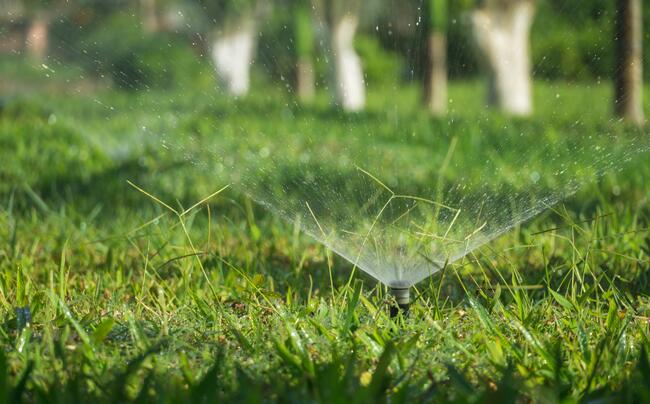Trees, lawns, shrubs, flowers, edibles, and gardens all require different amounts of water delivered with differing devices at different frequencies. Spray heads deliver water in a large pattern and are best in large turf areas. They deliver water with a relatively low precipitation rate (the amount of water a device will deliver efficiently to a given area of space). Bubblers (used for trees) deliver water at variable rates of flow. They generally run rather fast and deliver a large amount of water quickly. Trees love a very large drink of water at infrequent but regular intervals.. This promotes deep root growth and healthy overall form. Shrubs – especially desert shrubs – are best watered with drip irrigation. This concept is characterized by devices with extremely low precipitation rates and flows and deliver water directly to the root system footprint. The practice of separating your irrigation system zones by separating the emission devices and watering requirements based on best horticultural practices is called Hydrozoning and is required by code in almost all locations that have irrigation code.
All of the above is controller by a controller – or clocks (as the older generation refers to them). The controller is basically and primarily a clock – with some irrigation friendly features. Standard clocks for residential use plug into the wall – contain contacts to run a unique wire to each valve as well as a place for a common wire connection (that runs from the controller and connects to every valve in the system). When connected the wires from each valve will have a corresponding number on the controller. The controller is then programmed to run each zone at its optimal time and for best duration.



